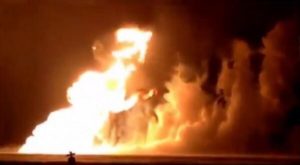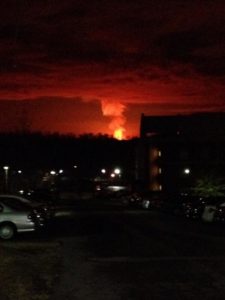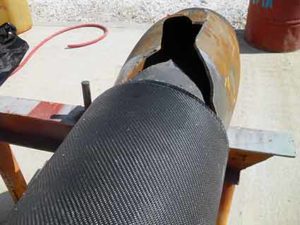Gas Pipeline Explosions Amid Freezing Temperatures
â€

Preventing Pipeline Explosions: A Critical Step for Safety and Reliability
Pipeline explosions are becoming an increasingly serious issue, often resulting in injuries, property damage, service disruptions, and even loss of life. According to the National Transportation Safety Board (NTSB), two main causes of natural gas pipeline explosions are mechanical failure and high-pressure ruptures. Richard Peekema explains that gas leaks from weld cracks or corrosion pinholes can lead to dangerous accumulations of gas in the surrounding air, increasing the risk of explosion. While these issues can release significant energy capable of causing catastrophic damage, they are largely preventable with proper maintenance and reinforcement. By addressing mechanical weaknesses and sealing leaks, pipelines can be made more resilient against high-pressure conditions.
With winter bringing freezing temperatures across the U.S. and Canada, keeping warm has become a major challenge, especially when gas outages occur. Earlier this year, a pipeline operated by TransCanada Corp exploded in Canada, sending flames over 600 feet into the air and burning for more than 12 hours. The incident immediately cut off natural gas supply to 4,000 homes and businesses, leaving them without heating during a severe blizzard where temperatures dropped as low as -20°F. The outage lasted three days, creating life-threatening conditions for many. Such events not only affect residents but also disrupt businesses and may cause damage to adjacent infrastructure.
In Kentucky, a gas pipeline explosion on February 13, 2014, caused widespread destruction. The pipeline, owned by Columbia Gulf Transmission and buried 20 feet underground, connects the Gulf of Mexico to New York and is part of a vast network across the Gulf Coast. The explosion created a nearly 60-foot-deep crater, sent rocks flying up to 150 feet away, and ignited a fire visible from 25 miles away. It destroyed two homes, damaged three others, scorched four vehicles, and set two barns on fire. Several people were hospitalized, and others suffered burns. Although the exact cause remains unknown, it likely stemmed from one of the common issues mentioned earlier. Many such incidents could have been avoided with advanced solutions like HJ3's CarbonSeal carbon fiber reinforcement system.
HJ3's CarbonSeal system is widely used around the world to strengthen and repair gas and oil pipelines. It is deployed in locations such as Boston, Alaska, California, Texas, Turkey, and Mexico. This innovative technology significantly boosts pipeline strength, allowing them to handle higher pressures while offering cost-effective long-term solutions. Recently, HJ3's CarbonSeal system passed rigorous burst testing and was approved for all PEMEX pipeline repairs, demonstrating its ability to withstand pressures up to 5,200 psi. Gas pipelines typically operate between 200 and 1,500 psi depending on their location. If you're responsible for managing or owning a pipeline, consider exploring HJ3's carbon fiber reinforcement systems to ensure safety and reliability. Contact our project managers today to learn more about how we can help protect your infrastructure.
â€

â€

â€
Wenzhou Huaze Machinery Co.,Ltd , https://www.multihz.com
